Terry Davis said when he moved to County Road 262 — Old Omen Road between Highway 110 South and New Chapel Hill — it was just a quiet country road.
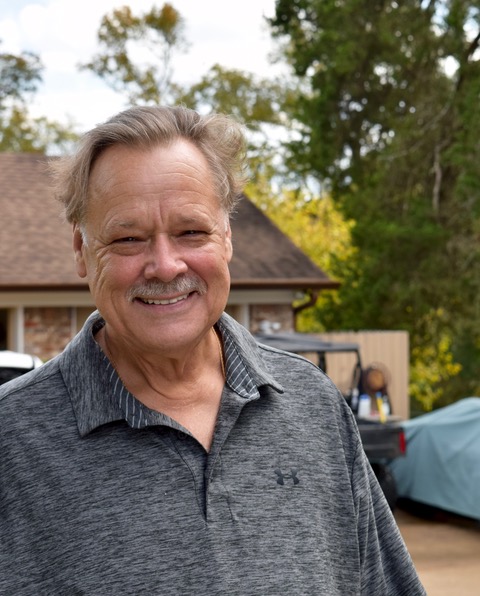
Phase 2 of the Smith County Road and Bond Program said,
“Road repair is way past due.” 📷 all photos by Brenda McWilliams
“Now it is just one car after another,” he said. “Road repair is way past due.”
Davis said the road is dangerous because there are no shoulders and very little ditch.
“One bicycle rider has already been run over and there is going to be more,” Davis said.
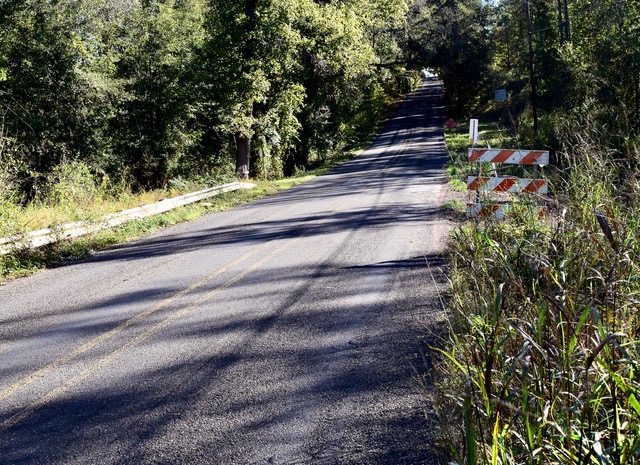
Relief is in sight for Davis and other CR 262 residents. 62.4% of Smith County voters Tuesday approved a $45 million Road and Bridge Bond proposal, the final phase of a plan to improve the county’s infrastructure.
Phase 1 began in 2017 when 73% of voters approved a $39.5 million bond. At its completion, the end of fiscal year 2022, Phase 1 will see 250 miles of Smith County roads reconstructed, completely overlaid or under construction.
The Phase 2 $45 million bond will cost the taxpayers .76 cents per $100 valuation or about $15 a year on a $200,000 home — the same as Phase 1 cost.
The Road and Bridge Capital Improvement Plan, initiated in 2015, followed a comprehensive county-wide road survey and assessment conducted by Atkins Engineering. Davis can expect reconstruction of CR 262 in about three years. Phase 2 bond funds and an additional $11 million from county capital reserves is expected to fund the remaining three years of the county’s six year road and bridge bond program.

County Engineer Frank Davis projected costs of Phase 2 improvements at $55,957.827 for 283 miles of improvements including major reconstruction, roadway stabilization and overlay and HMAC (hot-mix asphalt concrete) overlay. Phase 2 projects include 30 reconstruction projects, 87 road stabilization and overlay projects and 164 HMAC overlay projects.
Phase 2 projects are scattered throughout the county.
- Precinct 1 (Flint, Noonday, Bullard with 296 total road miles) will receive 68 miles of improvements in Phase 2, having received 55 in Phase 1.
- Precinct 2 (Whitehouse, Troup and Arp with 219 total road miles) will receive 46 miles of improvements in Phase 2, having received 42 miles in Phase 1.
- Precinct 3 (Lindale and Winona with 510 total road miles) will receive 138 miles of improvements in Phase 2 having received 63 in Phase 1.
- Precinct 4 (Northwest Smith County including most of Tyler with 144 total road miles) will receive 31 miles of improvements in Phase 2 having received 39 miles in Phase 1
Davis said the bond will benefit the county and its citizens.
“Many of the road improvements will include widening roadways and bridges, straightening curves in the roads and striping, which will make them safer and improve traffic flow. We are replacing some structures that will help with drainage. The current roads were not built for the traffic we have now. We are using more durable materials that will bring the roads up to a higher standard, provide a better road surface and extend the life of the roadway.”
Smith County Judge Nathaniel Moran explained the road and bridge department had been underfunded for decades, resulting in the county roads falling into disrepair. Moran said the Road and Bridge Bond projects are part of the long-range plan to bring the roads up to standards. Additionally, the county has increased the road and bridge county tax allocation from 2.94 cents per $100 valuation in 2015 to 3.75 cents currently, and finally to 5.0 cents to assure adequate routine maintenance and new construction as needed.
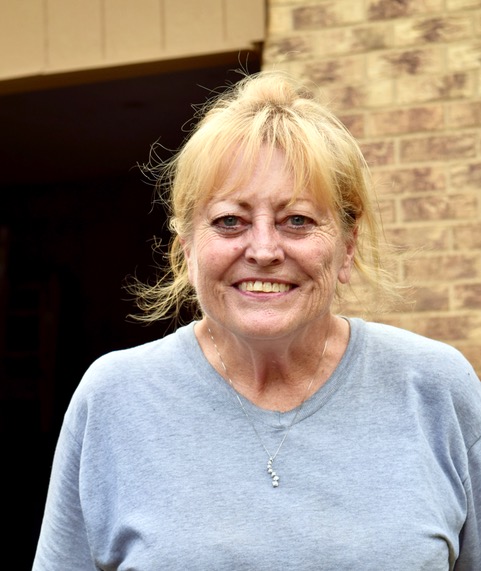
As a Phase 1 bond project, 3.049 miles of County Road 220 in the New Chapel Hill area underwent major reconstruction and widening. Rita Turner, who has lived in the area since 1999 said, “Before, the road had a lot of ripples and waves in it and there were no shoulders. Now the ripples and waves are gone, and the shoulders are a little better. The traffic is worse than on 64 and they go way too fast through here. I’d like to see better ditches and roadside mowing.”

Davis said public suggestions, concerns and complaints played a major role in selecting and prioritizing projects. The county reviewed public feedback forms regarding Phase 2 specifically, as well as those received during Phase 1 information gathering.
Five citizen input meetings attended by 140 individuals were held prior to calling the bond election in August. Davis said they also considered the pavement analysis and road rankings generated by the PAVER computer program during the initial Atkins Engineering Survey.
“We, the road and bridge department, did a lot of the actual field surveys ourselves. We drove the roads, evaluated them and provided the input for the PAVER program,” he said.

Davis said, “We also evaluated the use of the road, the traffic on it, whether it was a connector that ran between major highways, if it had a school or significant amount of industry on it. What purpose did the road serve? Those were all criteria that we looked at. We didn’t just look at the numerical number (PCI – Pavement Condition Index) reflecting the road condition. We looked at the totality of the whole roadway.”
In prioritizing work on the projects, Davis said he considered the size of the project, the location, and the cost.
“I’m going to use Lake Placid as an example. That’s a very long road about 14 miles total length. I divided long roads like that into three or four sections (projects) so we could spread the work out over a year, so we are not spending all the money in one part of the county. I wanted to address all the roads in all quadrants of the county.”
Davis also said working on smaller sections has allowed them to keep the individual project cost down to about $700,000 to $800,000, something the county wanted to do in the initial stages of the capital improvement plan. “Everybody wants their road done first, and we understand that, but we have to spread it out. That’s a hard decision to make.”
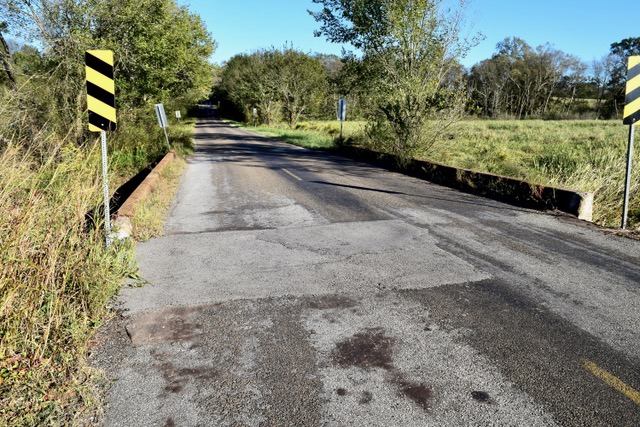
One major Phase 2 project in Precinct 4 is reconstruction of 3.6 miles of County Road 471 including a bridge replacement. CR 471 connects Toll Road 49 and Highway 110 North to Highway 69 North.
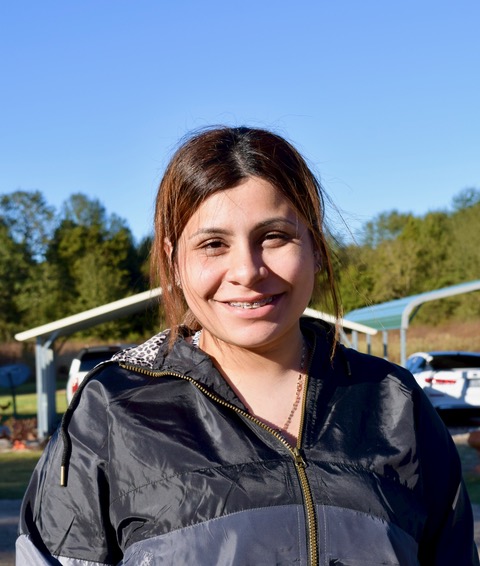
Kelly Maldonado, who resides on County Road 471 near the bridge slated for replacement said, “It feels great. The road has lots of bumps and the bridge floods when it rains a lot. They sometimes put cones out and we have to turn around. The construction will be inconvenient, but it will be worth it.” Maldonado can expect that construction some time during fiscal year 2023.
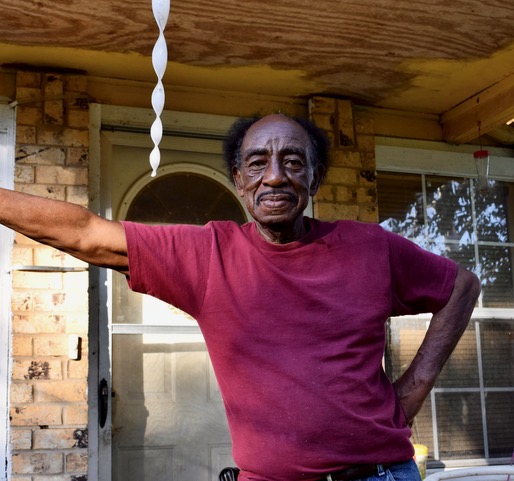
fixed the road about four times since we have been here.”
Bennie Edmonds, also residing on County Road 471 commented, “I haven’t thought much about it. I built this house 58 years ago when we married, and I have lived here ever since. I think they have fixed the road about four times since we’ve been here. I like the neighborhood. The traffic is worse since they started building these new houses.”
Davis said whether a project is done by the county is determined by the project type. The major reconstruction projects with drainage, box culverts, or a bridge are usually contracted. Also, reconstruction on high traffic roads will be contracted, because contractors have more resources such as barricading and media to regulate traffic flow.
Most of the HMAC overlay work is done in-house with county equipment and personnel. The HMAC materials, the greatest cost in the overlay projects, will be purchased with bond funds.
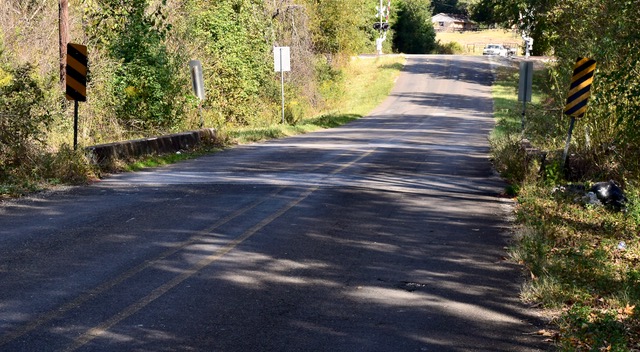
Davis acknowledges there are sometimes challenges and obstacles to getting the projects completed. “Contractors may be working on numerous projects at a time, and we want to keep them motivated to work and finish our projects in a timely manner.” Also, there are issues that come up that the county or the contractor has no control over such as relocating utility infrastructure.
Regarding Phase 2 Davis said, “We are going to be a lot more aggressive with some of these projects, and we are going to have more projects under contract and construction, so it is going to be harder to keep up with the contractors.”
In the new budget, the commissioners court allocated funds for one new road and bridge employee, an inspector, who is already on the job. “We are going to be very busy keeping up with the contractors. We are going to ensure that the money is spent well, and the finished product is what we want.”
Brenda McWilliams is retired after nearly 40 years in education and counseling. When not traveling she fills her days with community, charitable, and civic work; photography; writing and blogging at Pilgrim Seeker Heretic; reading, babysitting grandchildren, and visiting with friends. She enjoys walking at Rose Rudman or hiking at Tyler State Park. Brenda and her spouse, Lou Anne Smoot, the author of Out: A Courageous Woman’s Journey, have six children and seven grandchildren between them.
Love what you're seeing in our posts? Help power our local, nonprofit journalism platform — from in-depth reads, to freelance training, to COVID Stories videos, to intimate portraits of East Texans through storytelling.
Our readers have told us they want to better understand this place we all call home, from Tyler's north-south divide to our city's changing demographics. What systemic issues need attention? What are are greatest concerns and hopes? What matters most to Tylerites and East Texans?
Help us create more informed, more connected, more engaged Tyler. Help us continue providing no paywall, free access posts. Become a member today. Your $15/month contribution drives our work.







